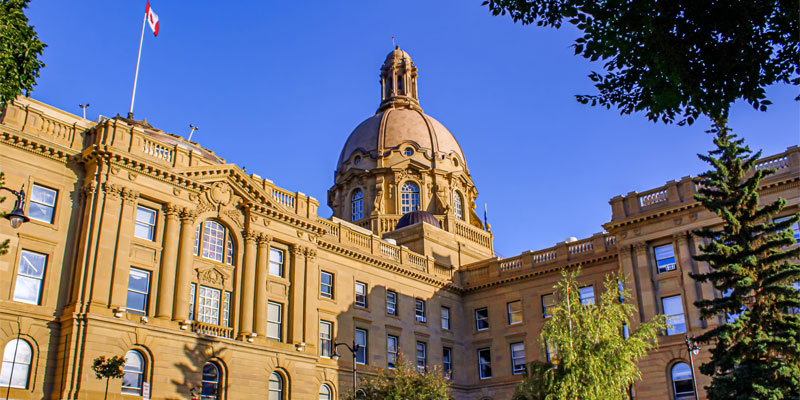Don’t be fooled by positive short-term news in Alberta fiscal update

In the mid-year fiscal update released last week, Alberta Finance Minister Travis Toews touted a strong economic and fiscal recovery buoyed by the energy sector. While the province is indeed set to enjoy higher commodity prices—West Texas Intermediate (a common benchmark) is projected to average US$70 per barrel in 2021/22—this positive short-term news should not mask the province’s ongoing challenges.
Alberta’s finances remain in the red, and rely too much on volatile resource revenues. According to last week’s update, Alberta will incur a $5.8 billion deficit in 2021/22, followed by deficits of $3.3 billion in 2022/23 and $2.3 billion in 2023/24.
Provincial government net debt (total debt minus financial assets) is projected to reach $73.9 billion by 2023/24, roughly $16,071 per Albertan. Of course, Albertans must pay interest on this debt, which will cost a projected $3.1 billion in 2023/24, roughly the equivalent of all corporate income tax revenue collected in an average year. That’s money unavailable for important priorities such as education and health care.
Moreover, Albertans still suffer from tax increases introduced under the previous provincial government (and current federal government) including higher personal income tax rates, capital gains taxes and the federal carbon tax.
Consider personal income taxes. As recently as 2014, Alberta had the lowest combined (provincial and federal) top personal income tax rate of any Canadian province or U.S. state, which helped attract entrepreneurs and investment to the province. Since then, tax increases at the provincial and federal level eroded Alberta’s tax advantage. The province went from having the lowest combined top personal tax rate to the 10th highest in Canada and the United States. Higher taxes make Alberta a less attractive place for entrepreneurs, professionals and businessowners who drive innovation, investment and job creation.
Perhaps the best indicator of Alberta’s ongoing challenges is the province’s marked decline in economic freedom—essentially, the ability of individuals and businesses to make their own economic decisions. High levels of economic freedom remain key to prosperity and have been associated with stronger economic growth, job creation, reduced poverty and better health. According to the Fraser Institute’s Economic Freedom of North America report, which ranks 50 U.S. states, 32 Mexican states and 10 Canadian provinces, Alberta went from being the most economically free jurisdiction on the continent in 2015 to ranking 33rd in 2019 (the most recent available data). That’s a worrying sign for provincial prosperity.
And of course, Alberta’s oil and gas industry continues to face significant barriers to investment due to ongoing regulatory burden. In the latest Canada-US Energy Sector Competitiveness Survey, which tracks perceived investment barriers in oil and gas exploration in 22 energy-producing Canadian and U.S. jurisdictions, Alberta ranked 12th in terms of investment attractiveness in 2021, with investors citing uncertainty around environmental regulations in the province, among other concerns. Recent announcements by the Trudeau government, including a hard cap on greenhouse gas emissions in the oil and gas sector, will only make matters worse.
An upswing in commodity prices is welcomed news for Alberta, but the province still faces huge fiscal and economic challenges, which policymakers must address.
Author:
Subscribe to the Fraser Institute
Get the latest news from the Fraser Institute on the latest research studies, news and events.

